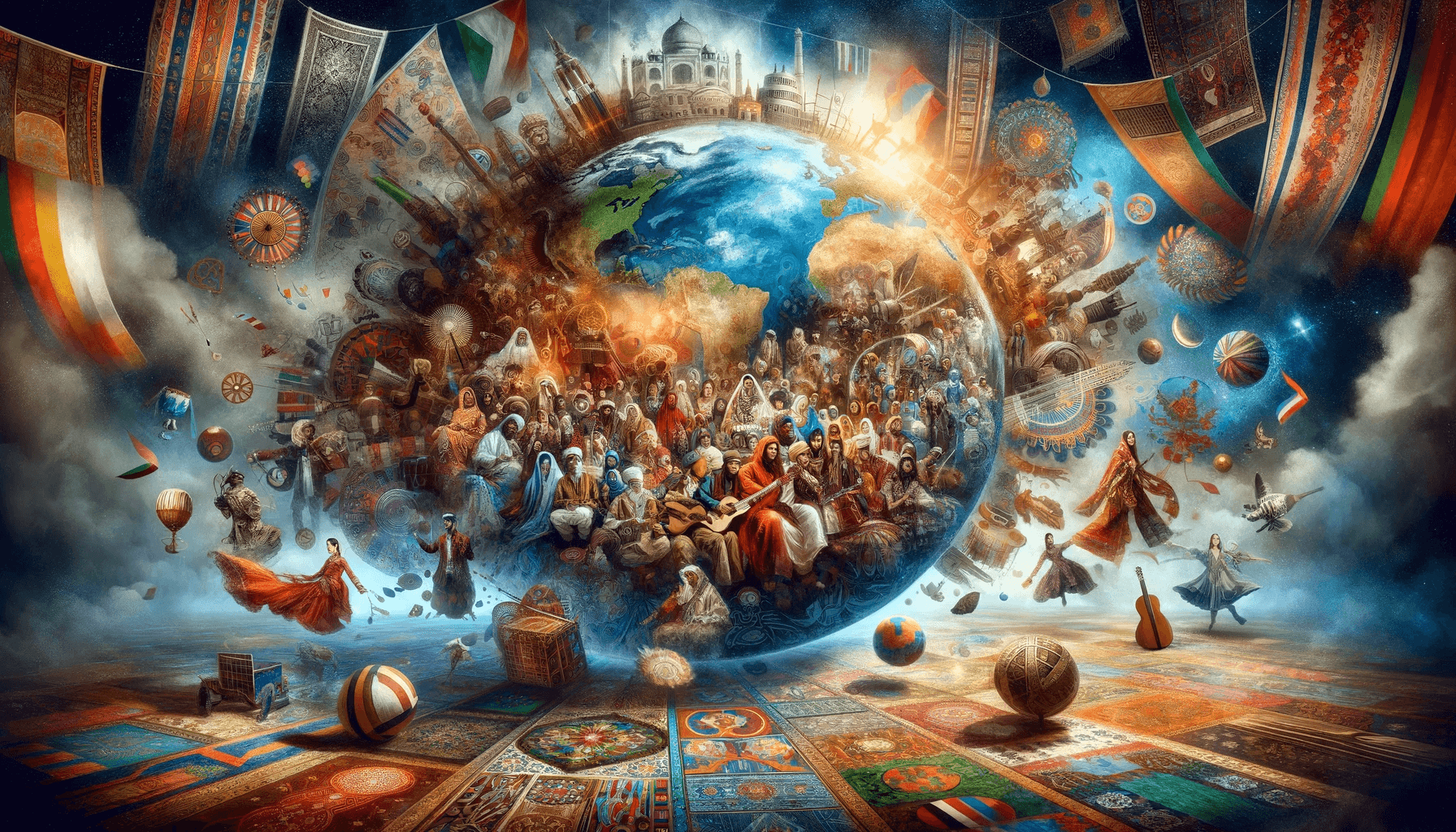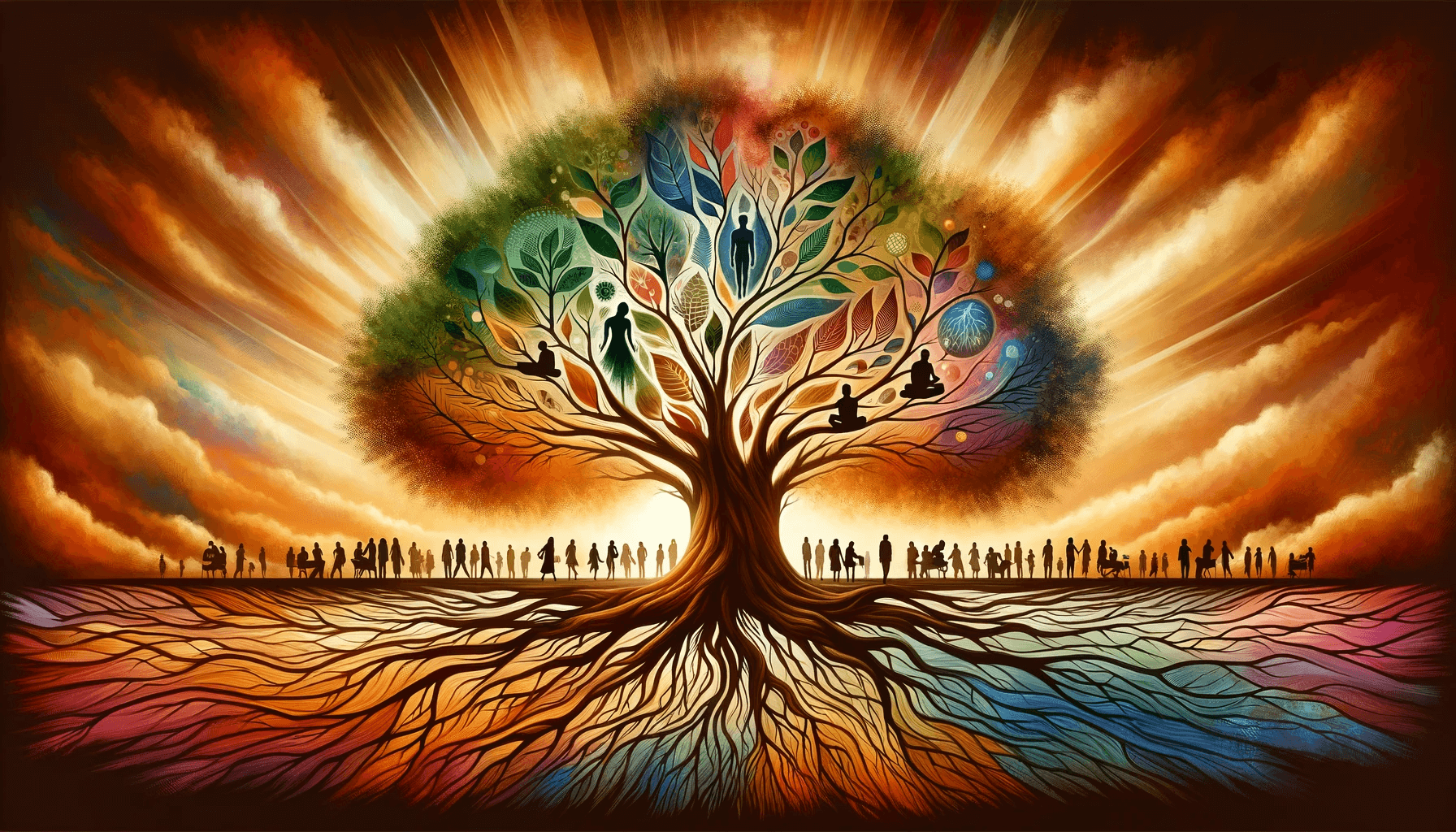Sponsor The Wealth Manifestation
Table of Contents
What is Cultural Tapestry?
Our world is a vibrant tapestry of diverse cultures, each woven with unique traditions, customs, and beliefs. This rich cultural tapestry is a testament to the beauty of human creativity and the countless ways societies have expressed their identities throughout history. In this article, we will journey through the cultural tapestry, exploring the importance of cultural diversity, different traditions worldwide, the significance of cultural festivals, traditional clothing, and cuisine, the impact of globalization, and the importance of preserving and promoting cultural heritage.
Understanding the importance of cultural diversity
Cultural diversity is a source of pride and identity for communities and a fundamental aspect of human development. Through cultural diversity, we gain a deeper understanding of the world and the people who inhabit it. It fosters mutual respect, empathy, and tolerance, allowing us to embrace different perspectives and broaden our horizons. Cultural diversity fuels innovation and creativity, as each culture brings unique knowledge and experiences. Recognizing and celebrating cultural diversity can create a more inclusive and harmonious society.
Exploring different cultural traditions around the world
From the ancient civilizations of Egypt and Mesopotamia to the indigenous tribes of the Amazon rainforest, every culture has distinct traditions passed down through generations. These traditions encompass various practices, including art, music, dance, rituals, and storytelling. For example, the Chinese New Year is celebrated with dragon dances, fireworks, and the exchange of red envelopes for good luck. At the same time, the Holi festival in India is known for its vibrant colors and joyous water fights. Through these traditions, we glimpse different cultures’ history, values, and aspirations, fostering a sense of unity in our shared humanity.
The significance of cultural festivals
Cultural festivals are a window into the soul of a community. They are a time when people come together to celebrate their shared heritage, strengthen social bonds, and pass on cultural knowledge to future generations. These festivals often showcase traditional music, dance, and cuisine, creating a sensory experience that immerses participants in the culture’s unique flavors and rhythms. For example, the Carnival in Rio de Janeiro is a dazzling spectacle of samba parades, vibrant costumes, and infectious energy. At the same time, the Diwali festival in India celebrates light, symbolizing the triumph of good over evil. By participating in cultural festivals, we honor our roots and gain a deeper appreciation for the diversity and richness of human expression.
Traditional clothing and its cultural significance
Traditional clothing plays a pivotal role in preserving cultural identity and heritage. It serves as a visual representation of a community’s values, beliefs, and social status. Each garment is meticulously crafted, often using traditional techniques and materials passed down through generations. For instance, the kimono in Japan is a symbol of elegance and refinement, with different patterns and colors denoting specific occasions or ranks. Similarly, the colorful and intricately embroidered garments worn by African indigenous tribes tell stories of their ancestral traditions and tribal affiliations. By embracing and wearing traditional clothing, individuals not only express their cultural pride but also contribute to preserving and promoting their cultural heritage.
Traditional cuisine and its role in cultural identity
Food is not just sustenance; it is a powerful cultural marker that reflects a community’s history, geography, and values. Traditional cuisine carries the essence of a culture, with each dish telling a unique story. From the rich spices of Indian curries to the delicate flavors of sushi in Japan, traditional cuisine offers a sensory journey into the heart of a culture. Moreover, traditional recipes are often passed down through generations, serving as a link between the past and the present. By savoring and sharing traditional dishes, we satisfy our taste buds and honor the ancestral wisdom and traditions that have shaped our cultural identity.
The impact of globalization on cultural diversity
While cultural diversity is a source of strength, it is also vulnerable to the forces of globalization. As the world becomes increasingly interconnected, cultures are exposed to external influences that can erode their unique traditions and values. Globalization has brought both benefits and challenges to cultural diversity. On one hand, it has facilitated the exchange of ideas, knowledge, and art across borders, fostering cross-cultural understanding and collaboration. On the other hand, it has also led to cultural homogenization, as dominant cultures and consumerism overshadow marginalized ones. It is crucial to balance embracing globalization and preserving cultural diversity, ensuring no culture is marginalized or lost.
Preserving and promoting cultural heritage
Preserving and promoting cultural heritage is essential for maintaining the vibrancy and diversity of our cultural tapestry. Governments, communities, and individuals all have a role to play in safeguarding cultural heritage. This can be done by establishing museums, cultural centers, and heritage sites where artifacts and traditions can be preserved and shared with the public. Education also plays a crucial role in promoting cultural heritage, as it helps instill a sense of pride and appreciation for one’s culture and respect for others. By actively engaging in cultural preservation efforts, we can ensure that future generations inherit a world that values and celebrates cultural diversity.
The benefits of embracing cultural diversity
Embracing cultural diversity brings a myriad of benefits to individuals and society as a whole. It fosters social cohesion, as people from different backgrounds celebrate their shared humanity. It promotes innovation and creativity, as diverse perspectives and experiences fuel new ideas and solutions. Embracing cultural diversity also enhances economic growth, opening up new markets and opportunities for trade and tourism. Moreover, it contributes to peace and stability, as understanding and respecting different cultures reduce prejudice, discrimination, and conflicts. We can create a more inclusive, prosperous, and harmonious world by embracing cultural diversity.
Conclusion: Celebrating the rich tapestry of cultures
As we traverse the cultural tapestry, we appreciate the many colors, patterns, and textures that make up our world. Each culture is a unique thread that weaves the fabric of humanity, and it is our collective responsibility to protect and celebrate this diversity. By understanding the importance of cultural diversity, exploring different traditions, embracing cultural festivals, honoring traditional clothing and cuisine, addressing the impact of globalization, preserving cultural heritage, and reaping the benefits of embracing cultural diversity, we can create a world where every culture is valued, respected, and celebrated. So, let us embark on this journey together, celebrating the rich tapestry of cultures that make our world a truly remarkable place.
CTA: Join us in embracing cultural diversity and celebrating the rich tapestry of cultures. Together, we can create a more inclusive and harmonious world.




